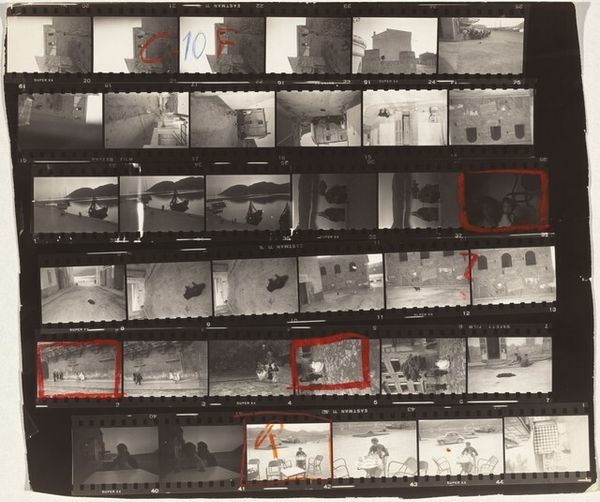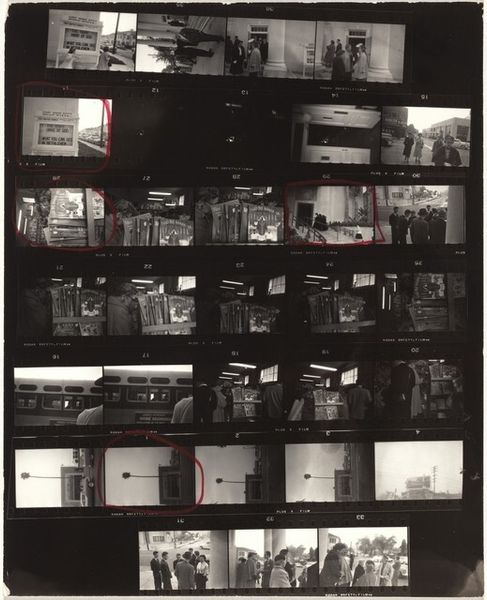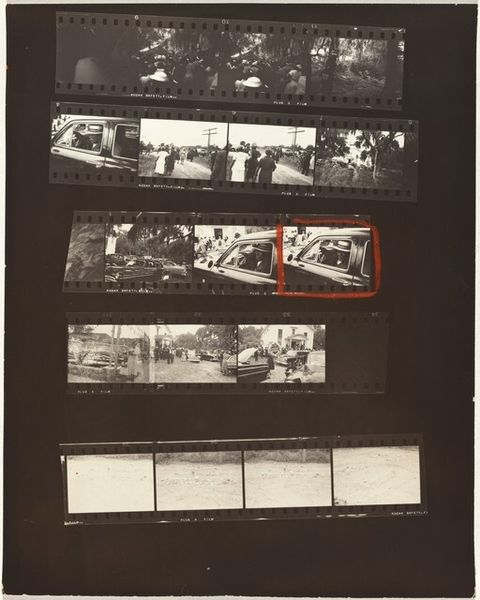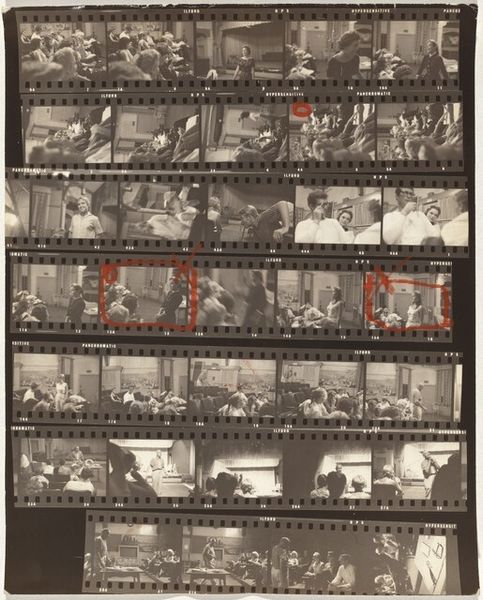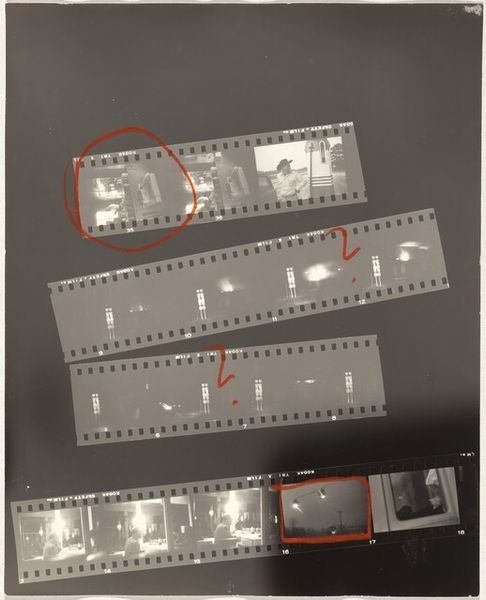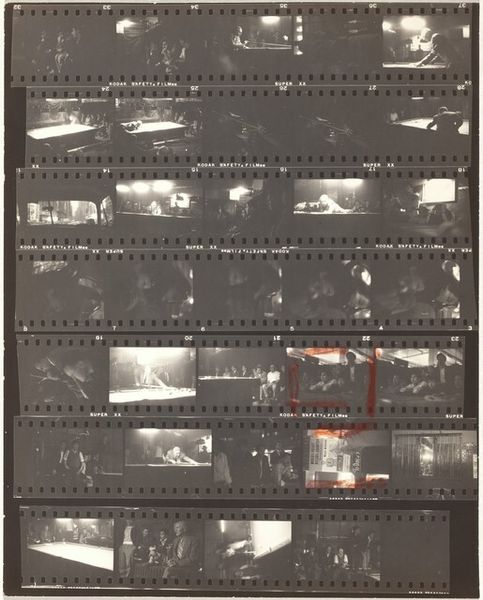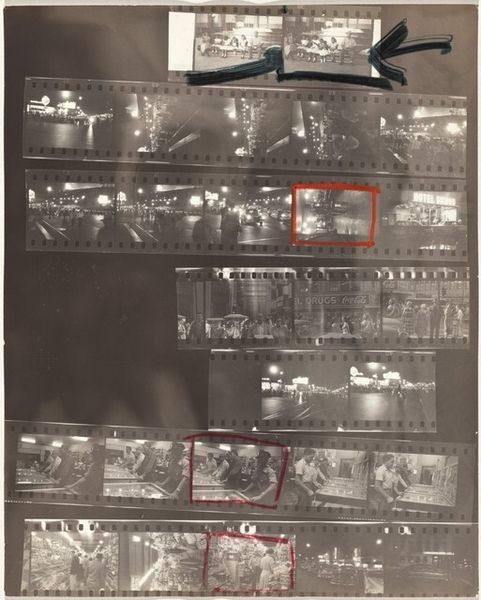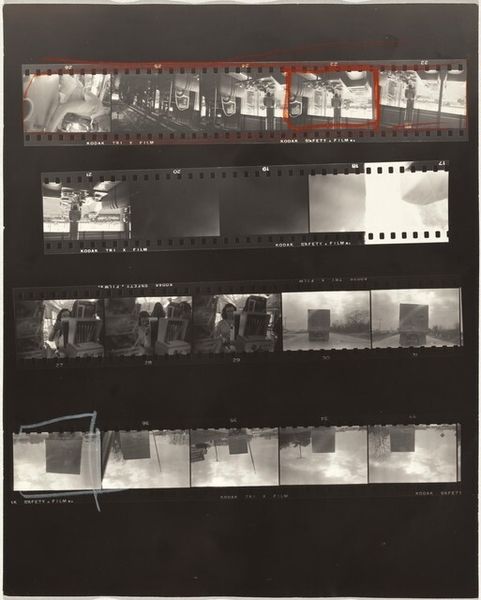
Dimensions: overall: 25.2 x 20.3 cm (9 15/16 x 8 in.)
Copyright: National Gallery of Art: CC0 1.0
Curator: This is "Florida 20," a gelatin-silver print by Robert Frank, created in 1958. Editor: My first impression is fragmented and nostalgic. The use of film strips gives the feeling of sifting through memories, like old home movies found in an attic. Curator: Precisely. Frank’s work often grapples with the American experience. The film strips themselves function as a sequence of impressions, mirroring how memories are stored. What specific symbols resonate with you here? Editor: The diners and passing cars are strong cultural markers, immediately evoking the mid-20th century. This presentation also spotlights the labor-intensive darkroom processes typical of the era; the materials speak volumes about pre-digital photographic practice. Curator: Those diners, yes, recurring figures in Frank’s exploration of Americana. They're both commonplace and emblematic. I am curious, what does this work suggest to you about the social fabric of the United States in that period? Editor: There’s a sense of both accessibility and distance. We’re given glimpses, snippets, rather than complete narratives. I am also drawn to the way Frank handles the physical arrangement, how these film strips are laid out before being copied, perhaps mirroring social strata—layered yet separate. It showcases not only the finished photograph but the photographic process, almost industrial in the repetition of frames and strips. Curator: I appreciate that material perspective. The raw physicality of the gelatin-silver print enhances this sense of immediacy and authenticity, don’t you think? Almost like flipping through an intimate diary. Editor: Definitely, it rejects high-gloss, perfection, to show something more real. These darkroom practices remind us how the human touch was crucial in the creation of any photograph. In conclusion, I would suggest Frank really pushed his medium to suggest more, through the final print, than simply a captured instant. Curator: Indeed. Frank seems to have preserved ephemeral, everyday experiences by freezing them, and allowing viewers across generations to witness both fleeting instances of post-war Americana, and consider the meaning imbued in photographic production, in this era and today.
Comments
No comments
Be the first to comment and join the conversation on the ultimate creative platform.

